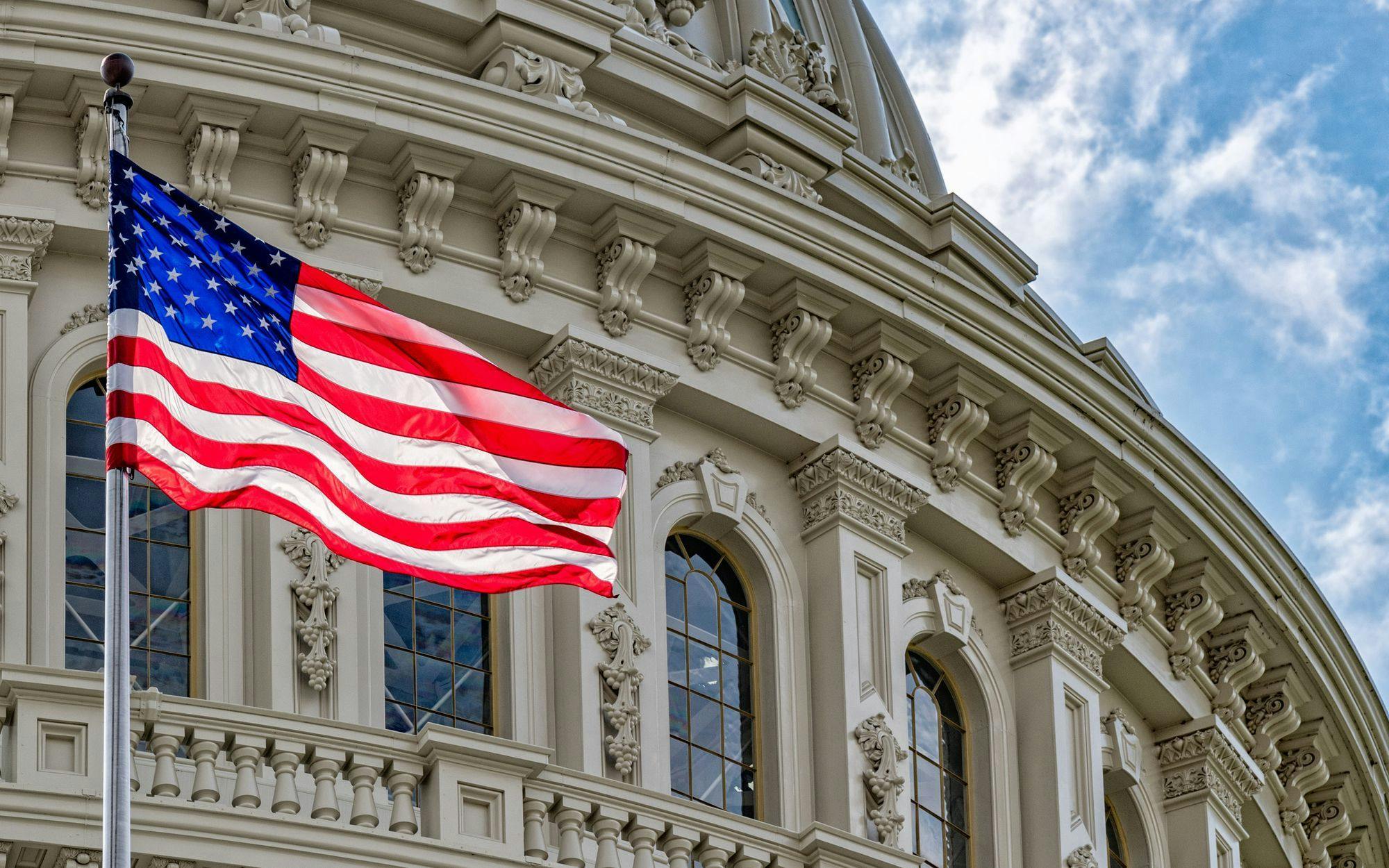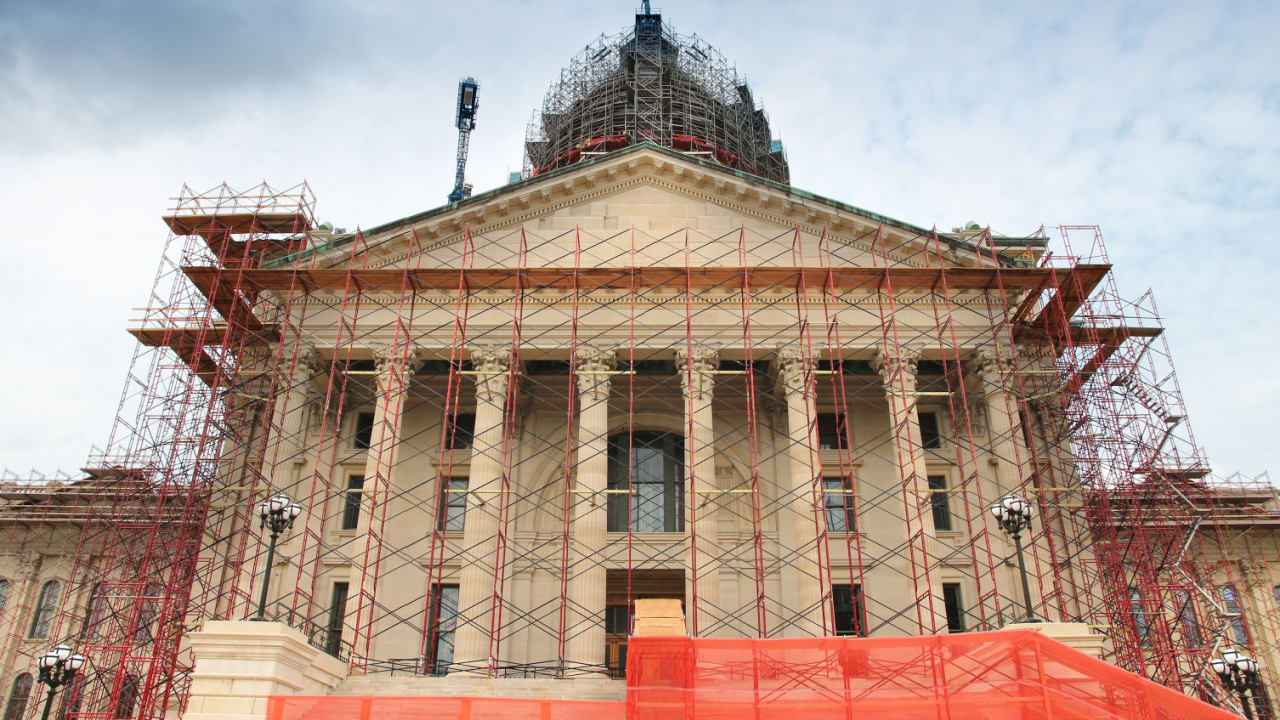
Surety Bonding: What’s Happening in Congress and the States?
Discussions over a broad infrastructure package continue to loom on the horizon in Washington, attracting stakeholders from all corners of the construction, design and financing sectors to urge action from decisionmakers in the nation’s capital.
In 2017, the American Society of Civil Engineers released its report card highlighting the nation’s critical infrastructure needs, citing failing grades in virtually every measurable infrastructure category. An array of stakeholders in the construction industry all agree on the abundant needs to fix roads, bridges, waterways, airports and other public works. Given the unanimous agreement from stakeholders, the path forward should be clear, but a federal infrastructure package remains an elusive advocacy goal for the construction and surety industries.
In April 2019, optimism around a comprehensive infrastructure investment package was high. Leadership in the House, Senate and White House all endorsed, in principle, a $2 trillion infrastructure package. However, negotiations between the White House and congressional Democrats broke down in May, and all attention has now turned toward crafting a smaller-scale surface transportation bill. Congress is tasked with reauthorizing funding for its highway programs before the current bill, the Fixing Americas Surface Transportation Act, expires in September 2020.
The Senate Environment and Public Works Committee has begun its work by passing a bill out of committee that would authorize $287 billion in highway spending, a 27% increase over previous FAST Act levels, over the next five years. In addition to funding existing formula grant programs, it would boost funding for bridge replacement, safety improvements and other infrastructure. However, passing a highway bill is no small feat and will require action by several more committees of jurisdiction. Tough conversations around funding even a small-scale infrastructure package will need to happen soon if Congress wants to pass a new highway funding bill.
Federal Infrastructure Funding Remains Elusive
Conversations to fund a new surface transportation package are underway in the Senate, but a path forward is not apparent. Historically, roads, bridges and other surface transportation projects have relied on the Highway Trust Fund, which receives revenue from the federal gas tax and diesel tax. Revenue from the federal gas tax, however, has not been raised or indexed for inflation since 1993 and continues to fall short of the amount needed for the programs.
Analysts from the Congressional Budget Office speculate the fund will be deemed insolvent after fiscal year 2021.
Preliminary discussions show little to no appetite in the Senate majority to increase the federal gas tax. Some lawmakers have floated a vehicle miles traveled tax, which would apply regardless of vehicles’ fuel efficiency, plus apply to electric cars that don’t use gasoline, as an alternative way to raise revenue. But, concerns around feasible implementation and driver privacy present major implementation issues.
Given the significant uncertainty on funding, discussions around even a smaller-scale highway bill are beginning to lose momentum. In the absence of a new highway spending bill, Congress will likely opt to extend the current funding legislation and return to the table to discuss a long-term plan later.
Gas Taxes in the States
In the absence of significant federal funding, real infrastructure investment is being driven at the state and municipal level. Since 2013, 31 states have raised or reformed their respective gas tax to fund infrastructure projects in some capacity. In 2019 alone, Alabama, Arkansas, Illinois, and Ohio all passed legislation raising their respective gas taxes in some fashion to address shortfalls in infrastructure investment.
Despite the significant effort to advance revenue-raising measures at the state and local level, the possibility of future federal funding creates incentives for key decisionmakers to postpone investment in infrastructure in the hope of receiving additional federal funding.
Federal TIFIA Program Reform
The Federal Department of Transportation Build America Bureau’s new leadership has been focused on streamlining and improving the application process for Transportation Infrastructure Finance and Innovation Act loans for state and municipal transportation projects. The program has faced challenges in leveraging all the available capital in its portfolio.
According to an Eno Center for Transportation report, in fiscal year 2018, the DOT provided three TIFIA loans totaling $1.8 billion in loan value, which constitutes less than half of the new loan authority provided by the FAST Act for fiscal year 2018. The FAST Act, along with direction from the current administration, has encouraged the Build America Bureau to “improve the application processes for departmental credit programs through streamlined review and transparent approval processes.”
Congress is also considering clarifying security requirements (e.g., payment and performance bonds) for TIFIA-financed public private partnerships (P3s). State law on P3 bonding varies from jurisdiction to jurisdiction, allowing state transportation departments to inconsistently apply security requirements. Several large jurisdictions have passed legislation specifically addressing bonding for P3 projects; however, current practices potentially allow TIFIA funding to flow into unbonded projects. Historically, all projects that receive taxpayer funding have required payment and performance security in some fashion.
Federal Bonding Thresholds
The House of Representatives included language to exempt the Miller Act from the required indexing for inflation for all federal acquisition thresholds in its version of the National Defense Authorization Act. H.R. 224 was introduced by Chairwoman Nydia Velazquez of the Small Business Committee and was ultimately approved by the House Armed Services Committee during its deliberations on this year’s NDAA bill.
The provision is currently under consideration by the Senate and House conferees as they reconcile the two versions of the NDAA bill.
The Miller Act bond threshold is scheduled to be reviewed next year and could be increased from $150,000 to $200,000. Information collected by The Surety & Fidelity Association of America shows that the federal government’s exposure to loss from default would increase by approximately $300 million annually for federal projects alone, and subcontractors would be working on larger jobs without payment protection.
In the States: Public-Private Partnerships
Twenty-three states considered legislation to authorize the use of P3s in 2019. Although that number may sound high, this was this first year SFAA observed a slight downward trend in the volume of legislation, particularly in the number of bills to authorize the broad use of P3s for public infrastructure projects. This could be because Massachusetts and New York are the only remaining large markets for P3s without a broad-based P3 authorizing law.
Notably, Colorado and Indiana amended their P3 laws to require bonding. In the transportation sector, Florida enacted legislation for corridor and expressway projects. Eight other states also considered P3 transportation bills that did not pass in 2019.
Although fewer states considered broad, enabling legislation this year, more bills focused on specific kinds of P3 projects. P3 legislation for specific kinds of projects was enacted in Illinois, Missouri and Vermont, with nine other states also considering such legislation.
In Missouri, legislation passed affirming payment bond requirements for P3s after the Brentwood Academy v. Tennessee Secondary School Athletic Association court decision injected some uncertainty around bonding P3 projects. Provisions included in the new law require the payment bond to pay suppliers of all tiers with 90-day notice and prohibit lien rights when payment bonds are in place.
Emerging Issue: Broadband P3s
P3s are increasingly being considered to address access to broadband wireless services, with such legislation being enacted in Arkansas and North Carolina. Legislation in North Carolina included reference to the state’s Little Miller Act to ensure broadband P3 projects require payment and performance bonding.
Five states—Hawaii, Mississippi, Nebraska, New Mexico and New York—considered bills to authorize the use of P3s for broadband.
Oregon introduced a bill for studying the use of P3s to address broadband infrastructure needs, and Washington enacted a new law to create an infrastructure grant and financing program for which P3s will be eligible to receive such funds.
On the federal level, the Federal Communications Commission proposed rules designed to expand the Rural Digital Opportunity Fund. Currently, the FCC requires internet service providers to provide a line of credit to secure the obligations to repay the support already paid for out of the Rural Digital Opportunity Fund. Small internet service providers have voiced concern over the impact a line of credit has on their day-to-day finances and have suggested surety bonds would be a viable opportunity to secure their obligations to the FCC.
Retainage
Retainage also came under some scrutiny this year as states considered reduced amounts. A new trend was states considering reducing retainage to as low as 2.5%. In Oklahoma, a new law provides that when public construction projects are 50% complete and a bond is required under the Little Miller Act, the retainage will be reduced to 2.5% of the progress payments.
Retainage also will be capped at not more than 5% until the project reaches 50% completion. Previously, retainage was capped at not more than 5% for the whole project. Nevada enacted a new law that reduces the amount of retainage that the DOT is authorized to withhold from 5% to 2.5% of the amount of the progress payments to the contractor. The new law repealed the $50,000 cap on the total amount of retainage that can be withheld.
Florida also considered legislation to reduce retainage from the current 10% to 5% prior to a project reaching 50% completion, and then reducing it to 2.5% after the project reaches 50% completion, but the bill failed to pass.
Alternative Project Delivery Methods
Fifteen states considered legislation concerning the design-build and construction manager project delivery methods.
Wisconsin enacted a new law authorizing the DOT to use design-build projects and stating that the request for proposal must include requirements relating to performance bonds, payments bonds and insurance.
Oklahoma and South Carolina amended their laws for alternative project delivery methods to further specify the bonding requirements. In Oklahoma, political subdivisions now are authorized to require construction managers to provide 100% bonding. The construction manager also may require subcontractors or suppliers to be bonded. The new South Carolina law provides that bonds or security may be required for 100% of the designated portions of a project for construction managers at-risk, design-build or design-build-finance-operate-maintain contracts.
Related stories








